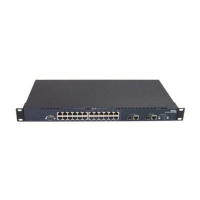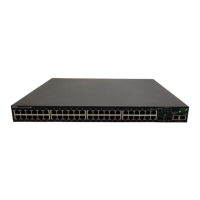868 BigIron RX Series Configuration Guide
53-1002253-01
Configuring IS-IS (IPv4)
28
• If the path provided by IS-IS has the lowest administrative distance, then the CPU places that
IS-IS path in the IP route table.
• If a path to the same destination supplied by another protocol has a lower administrative
distance, the CPU installs the other protocol’s path in the IP route table instead.
The administrative distance is a protocol-independent value from 1 – 255. Each path sent to the
CPU, regardless of the source of the path (IS-IS, OSPF, static IP route, and so on) has an
administrative distance.
Each route source has a default administrative distance. The default administrative distance for
IS-IS is 115.
You can change the administrative distance for IS-IS and other routes sources.
Intermediate systems and end systems
IS-IS uses the following categories to describe devices within an IS-IS routing domain (similar to an
OSPF Autonomous System):
• Intermediate System (IS) – A device capable of forwarding packets from one device to another
within the domain. In Internet Protocol (IP) terminology, an IS is a router.
• End System (ES) – A device capable of generating or receiving packets within the domain. In IP
terminology, an ES is an end node or IP host.
When you configure IS-IS on a device, the device is an IS.
Figure 117 shows an example of an IS-IS network.
FIGURE 117 An IS-IS network contains Intermediate Systems (ISs) and host systems
Router A Router B
Router C
Router D
Router E
BGP4
IS-IS Area 1
IS-IS Area 2
IS-IS Routing Domain
IP
Host
IP
Host
IP
Host
An IS-IS routing domain can
contain multiple areas.
IS-IS routers route within an
area at Level-1.
IS-IS routers route between
areas at Level-2.

